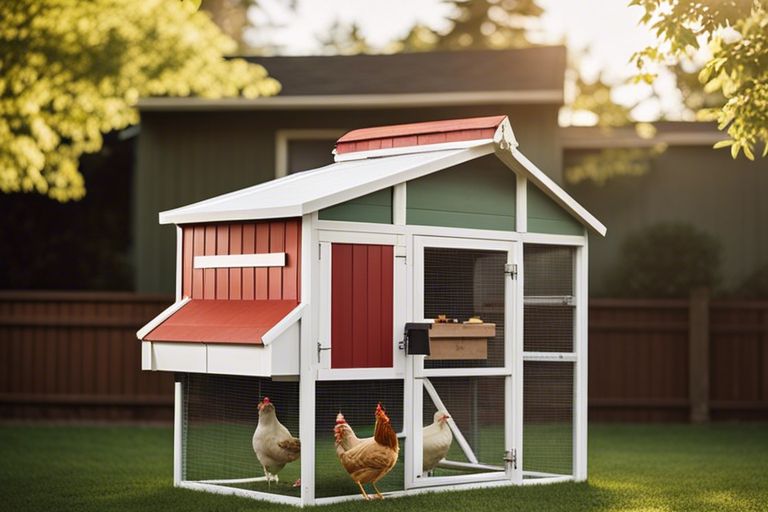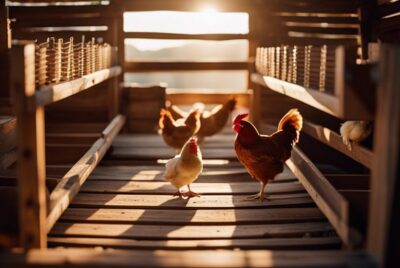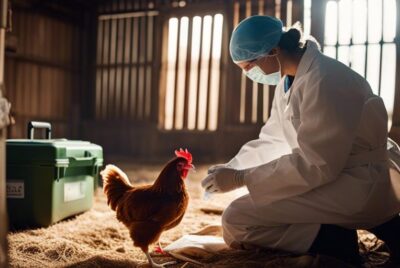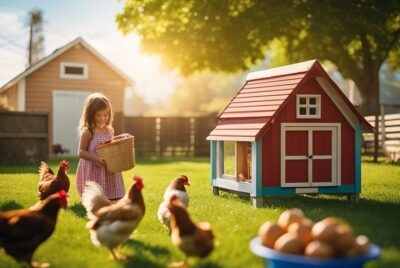Essential Features of a Well-Designed Chicken Coop
There’s an art to creating a functional and secure chicken coop that keeps your feathered friends happy and healthy. From proper ventilation and adequate space to predator-proofing and easy cleaning access, a well-designed chicken coop is essential for the well-being of your flock. Let’s probe into the key features that every chicken owner should consider when building or upgrading their coop to ensure a safe and comfortable environment for their chickens.
Structural Design
The structural design of a chicken coop plays a crucial role in ensuring the health, safety, and well-being of your feathered friends. A well-designed coop not only provides protection from predators but also creates a comfortable environment for the chickens to thrive. When planning the structural design of your coop, consider factors such as size, space requirements, ventilation, insulation, and durability.
Size and Space Requirements
With regards to size and space requirements, it’s essential to provide enough room for your chickens to move around freely. A good rule of thumb is to allow at least 2-4 square feet of space per chicken inside the coop and 8-10 square feet in the outdoor run area. This ensures that the chickens have ample space to exercise, roost, and lay eggs comfortably. Additionally, consider the height of the coop to allow for good ventilation and easy cleaning.
When designing the layout of the coop, factor in nesting boxes, perches, and feeding stations to promote natural behaviors and reduce stress among the flock. Incorporating windows or skylights can also help provide natural light and ventilation, contributing to a healthier environment for the chickens.
Ventilation and Insulation
Insulation is crucial for maintaining a consistent temperature inside the coop, especially during extreme weather conditions. Adequate insulation can help keep the coop warm in the winter and cool in the summer, ensuring that the chickens remain comfortable and healthy. Proper ventilation is equally important to prevent moisture buildup, reduce ammonia levels, and prevent respiratory issues.
Any openings for ventilation should be covered with wire mesh to keep out predators while allowing for adequate airflow. Consider adding vents near the roof or eaves to facilitate proper air circulation without creating drafts. Regularly checking and maintaining the insulation and ventilation system is key to ensuring the longevity and functionality of your coop.
Safety and Protection
One of the most crucial aspects of a well-designed chicken coop is ensuring the safety and protection of your flock. From predators to harsh weather conditions, it is essential to incorporate features that will keep your chickens safe and secure at all times.
Predator Proofing Techniques
To safeguard your chickens from potential predators such as foxes, raccoons, and hawks, it is important to implement effective predator-proofing techniques. This can include installing sturdy fencing with buried wire mesh to prevent digging, securing latches on doors and windows, and covering any openings with strong, predator-resistant materials.
Another effective technique is to use motion-activated lights or sound devices to deter nocturnal predators. Additionally, placing hardware cloth over windows and vents can prevent easy access for smaller predators like snakes and rats. By employing these strategies, you can significantly reduce the risk of predator attacks on your flock.
Weather Resilience Features
Proofing your chicken coop against harsh weather conditions is essential for ensuring the well-being of your chickens. Features such as a sloped roof with overhangs, proper insulation, and adequate ventilation can help regulate the temperature inside the coop and protect your flock from extreme heat or cold.
With proper weather-resilient design elements in place, you can minimize the risk of issues such as frostbite in winter or heat stress in summer. Investing in quality materials and construction methods for weatherproofing your chicken coop will provide long-term protection and comfort for your chickens throughout the year.
Maintenance and Accessibility
Now, let’s talk about the essential features of a well-designed chicken coop when it comes to maintenance and accessibility. Ensuring that your coop is easy to clean and manage will not only benefit the health and well-being of your flock but also make your life as a chicken keeper much easier.
Cleaning and Waste Management
With regards to cleaning and waste management, it’s crucial to have features in place that make this task as easy as possible. Consider including removable litter trays or sliding floors that allow for quick and efficient cleaning. Ventilation is also key in reducing moisture buildup and controlling odors. Additionally, having a designated area for composting or disposing of waste will help keep your coop clean and hygienic.
Implementing a regular cleaning schedule is essential to prevent the buildup of harmful bacteria and parasites. Make sure to use safe and suitable cleaning products that won’t harm your chickens. Proper waste management not only keeps your coop clean but also contributes to a healthier environment for your flock.
Feed and Water Systems
Maintenance of feed and water systems is another critical aspect of a well-designed chicken coop. Automatic feeders and waterers can help ensure a constant supply of food and water for your chickens, reducing the risk of contamination and spillage. These systems also make it easier to monitor and control the amount of feed and water your flock receives.
Systems such as gravity-fed or nipple waterers can help minimize water waste and keep your coop dry. It’s important to regularly check and clean these systems to prevent blockages or malfunctions. Proper maintenance of feed and water systems will not only save you time and effort but also contribute to the overall health and productivity of your chickens.
Comfort and Well-being
Despite being relatively low-maintenance animals, chickens require a comfortable and well-designed coop to thrive. Ensuring their comfort and well-being is essential for their overall health and productivity. There are several key features to consider when designing a chicken coop to meet the needs of your flock.
Nesting Boxes and Roosting Bars
Roosting bars are essential for chickens to perch on at night. They prefer sleeping on elevated bars to stay safe from predators and feel secure. Make sure the roosting bars are wide enough for your chickens to comfortably perch on without their feet hanging off the edge. Nesting boxes are also crucial for hens to lay their eggs. Provide enough boxes for your flock, ensuring they are located in a quiet and dark area to promote egg-laying.
It’s important to keep the nesting boxes clean and lined with fresh bedding to prevent the eggs from getting dirty. Additionally, regularly check the roosting bars for any signs of wear and tear, replacing them if necessary to ensure your chickens’ safety while roosting.
Lighting and Enrichment
On top of natural lighting, providing artificial light in the coop can help to stimulate egg production, especially during the shorter days of winter. Timer-controlled lights can mimic natural daylight patterns, encouraging hens to lay eggs consistently throughout the year. Enrichment such as hanging toys or treats can also keep your chickens entertained and reduce boredom-related behaviors like pecking or aggression.
Boxes such as cabbage hanging from a string or a flock block can provide mental stimulation and encourage natural foraging behaviors, promoting a happier and healthier flock overall. Regularly rotate and change out enrichment items to keep your chickens engaged and prevent them from getting bored of the same stimuli.
Summing up
Now, having a well-designed chicken coop is essential for the health, safety, and productivity of your flock. Key features like proper ventilation, adequate space, secure predator-proofing, and easy access for cleaning are crucial for the well-being of your chickens. By focusing on these essential elements, you can create a comfortable and functional home for your feathered friends. Note, investing time and effort in designing a quality coop will ultimately lead to happier and healthier chickens, and a more successful poultry operation overall.



